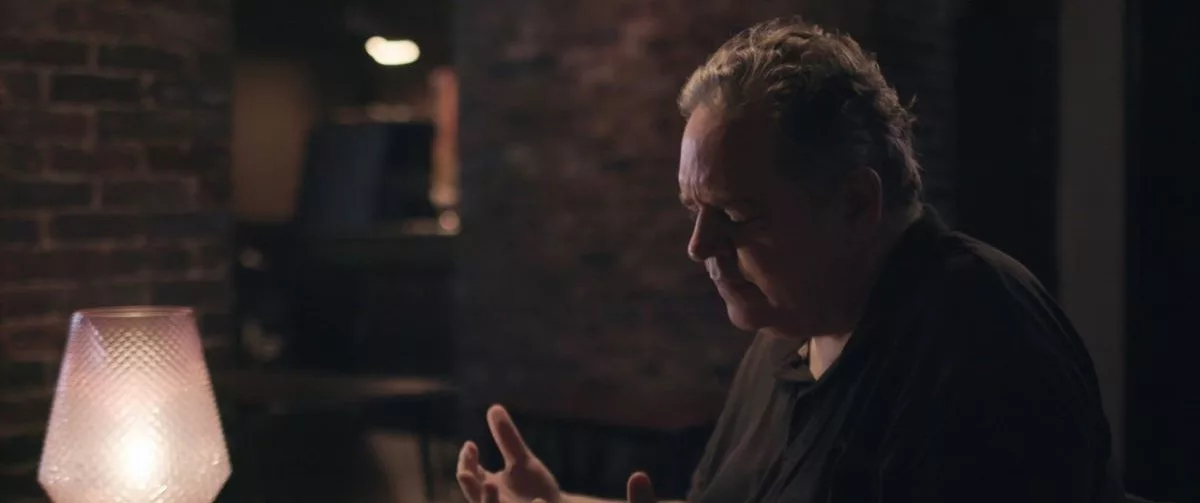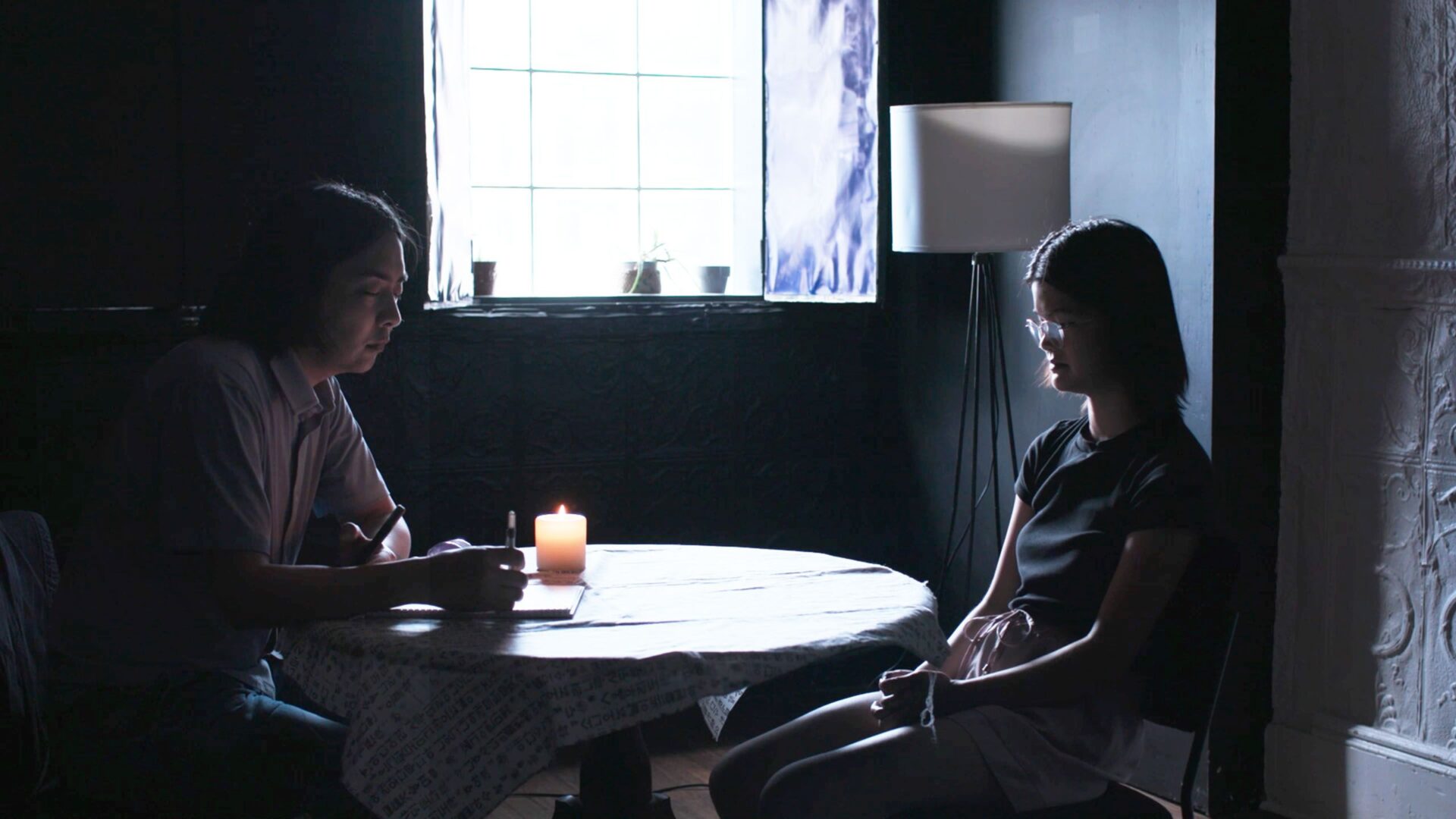
Look Into My Eyes
- by admin
- Posted on 7 September, 2024
“Look Into My Eyes,” a portrait of mediums and their clients, is a nonfiction movie where the whole point is to watch people, listen to what they say, and think about the emotions they feel as they tell their stories.
The film identifies no one onscreen with printed names and titles. There are no headlines, montages or other forms of narrative help. By watching them interact, you figure out who’s the medium and who’s the client. It’s the kind of movie that communicates what matters to it by how it gathers and presents information. That feels like the right approach considering the subject matter, which is a profession that many people are skeptical about. Directed by Lana Wilson, the movie is a throwback to a different kind of documentary that used to be common fifty or more years ago. It may seem fragmented, elusive, or “arty” to modern audiences who aren’t into older movies and have no reference point for what they’re watching. Hopefully not, though, because it’s an often profound and touching documentary that engages your attention differently than movies usually do.

We begin with a closeup of a doctor who has gone to a medium because twenty years earlier, when she was a junior physician at a hospital, she attended to a ten-year-old girl who’d been killed in a drive-by shooting while leaving church with her mother. The woman wants to know if the girl is at peace on the other side. The movie cuts away to a black screen, leaving you with the woman’s mix of lingering pain and hopefulness. As we meet various mediums, commonalities emerge. Several were adopted and feel a sense of cultural or racial dislocation that makes them good at reaching out to clients but also gives them a feeling of alienation from the dominant culture. Many are artists. There’s a woman who’s a painter and several people who are actors, screenwriters or some mix.
There are moments where it seems like the mediums are “fishing” or at least struggling, sometimes in a way that suggests charlatanism. Other times they instantly seem to find the exact person the client was hoping to connect with, even though there were no obvious clues that might’ve helped them fake their way into it. Are the mediums actually talking to people on the other side? Or are they experiencing an alchemical mix of their own creativity and empathy, a certain “performer’s instinct” (for lack of a better phrase), and an ability to connect with individual clients and the part of themselves that wants to plug into something beyond the everyday?

One young psychic who seems troubled and doubtful has a moment in a session in which he says he’s envisioning a young man with a skateboard. When the client doesn’t respond to that prompt, he asks the camera crew if any of them had any profound personal connection to a young man with a skateboard, and they didn’t. He apologizes for being off his game (he blames tiredness) and tries to keep the session going. In a separate interview, he admits to the filmmakers that he fears being, essentially, a fake—somebody who thinks he has the gift but doesn’t.
Another of the psychics (he identifies himself late in the movie as Michael) rather mortifyingly asks if the dead man that a client came to speak with “had trouble breathing” (probably almost anybody who dies has trouble breathing, yes?) and is told that, in fact, the man hung himself. “That would be a breathing issue for sure,” the medium says. “Uh, yeah. So tragic.” That he went to school with the client and initially didn’t recognize her compounds the awkwardness. But then he notes that she had blond hair back then, and goes on to mention the man she’s come to see, a classmate named Brian, without any prompting, whereupon she produces a photo and other significant objects, including a fan.
The movie doesn’t take a position on whether psychic phenomena are real, whether there’s an afterlife and ghosts/spirits, or whether anything definitive or even measurable is happening in these sessions, beyond some fundamental emotional connections between medium and client. It’s not interested in proving or disproving anything. It’s interested in why people go to/become mediums, and what happens in the rooms during sessions.
Wilson and editor Hannah Buck work a lot of their magic through ellipses: the pauses, hesitations, and silences in conversation and our chain of thought and feeling. You listen to clients sum up why they’ve come to visit a medium, and there’ll be a pause while the medium processes the information, then another pause after they ask follow-up questions and try to contact the spirit that the client wants to communicate with.
The play of emotions on the faces of the clients and mediums is a show in itself. Movies generally don’t have the patience to merely sit and look at people’s faces anymore, unless it’s for a show-stopping long-take closeup of a movie star emoting. Parts of this movie seem to rediscover the reason close-ups were created.
The medium who experiences the moment of embarrassment during a session says that he’s driven mainly by a desire to connect with something bigger than himself. So is everyone.
One of the more fascinating observations that emerges is that all the mediums are, to greater or lesser degrees, both incredibly self-involved and genuinely outer-directed and empathetic. There isn’t a single one who doesn’t seem genuinely interested in hearing clients’ stories and helping them find peace. Of course, the impulse always comes from somewhere.
One of the most powerful threads in the film is a series of visits with a medium who’s also a writer, actor, and film buff. His place is — well, ‘cluttered’ is too mild a word. Disordered. He realizes this and is embarrassed to the point of asking the crew to please not point the camera at his bedroom, because it’s even worse than the rooms we’ve been allowed to see. He says one of his favorite films is Walter Salles’ “Central Station,” about an older woman who befriends a young boy in need, and his other favorite film is “Ordinary People.” When he starts to go into detail about why he loves these two films, he bursts into tears. He’s hurting, just like his clients.
Everybody’s hurting. That, perhaps, is the larger point of the movie. We’re all carrying the burdens of agonizing personal experiences, and whether or not people instantly see it depends on how well we manage and/or channel the pain. This becomes even clearer in a late section that brings all the mediums together for their group therapy session where they get to talk shop and connect.
“It’s not entirely selfless,” another medium says. “In fact, it’s not selfless at all. Everybody gets a healing.”
Cinema is a medium, in both senses of the word: connecting people to other people, and the living to the dead.
“Look Into My Eyes,” a portrait of mediums and their clients, is a nonfiction movie where the whole point is to watch people, listen to what they say, and think about the emotions they feel as they tell their stories. The film identifies no one onscreen with printed names and titles. There are no headlines,…